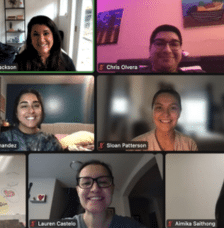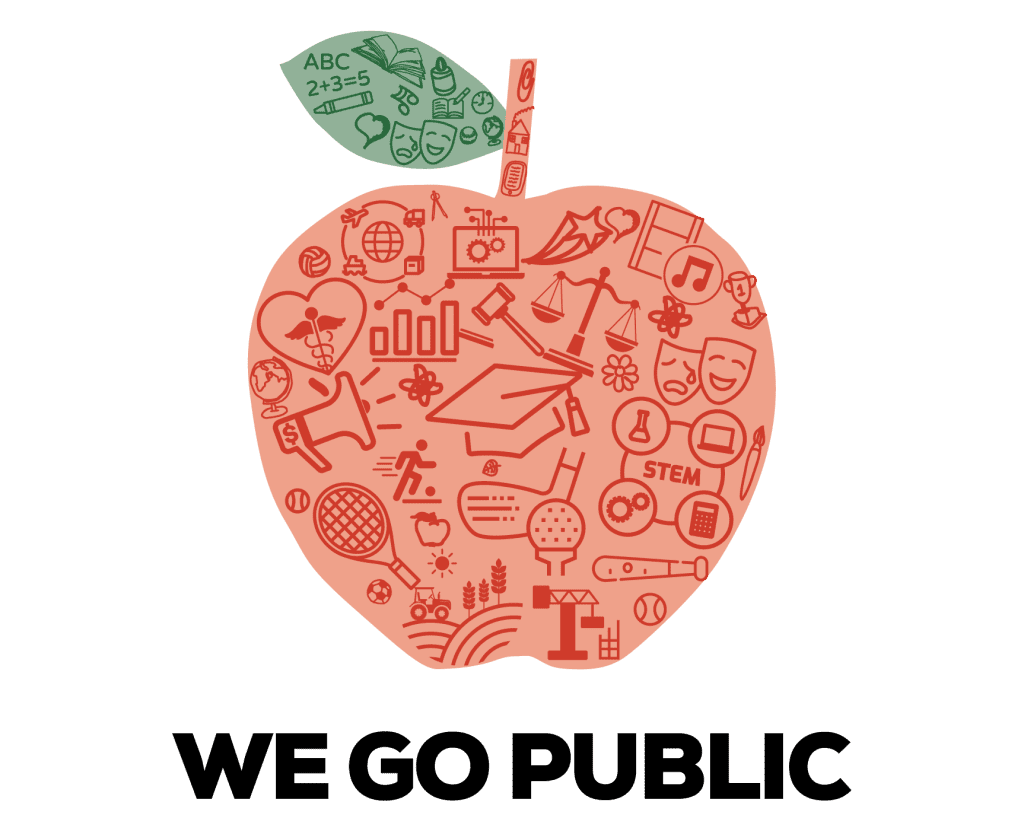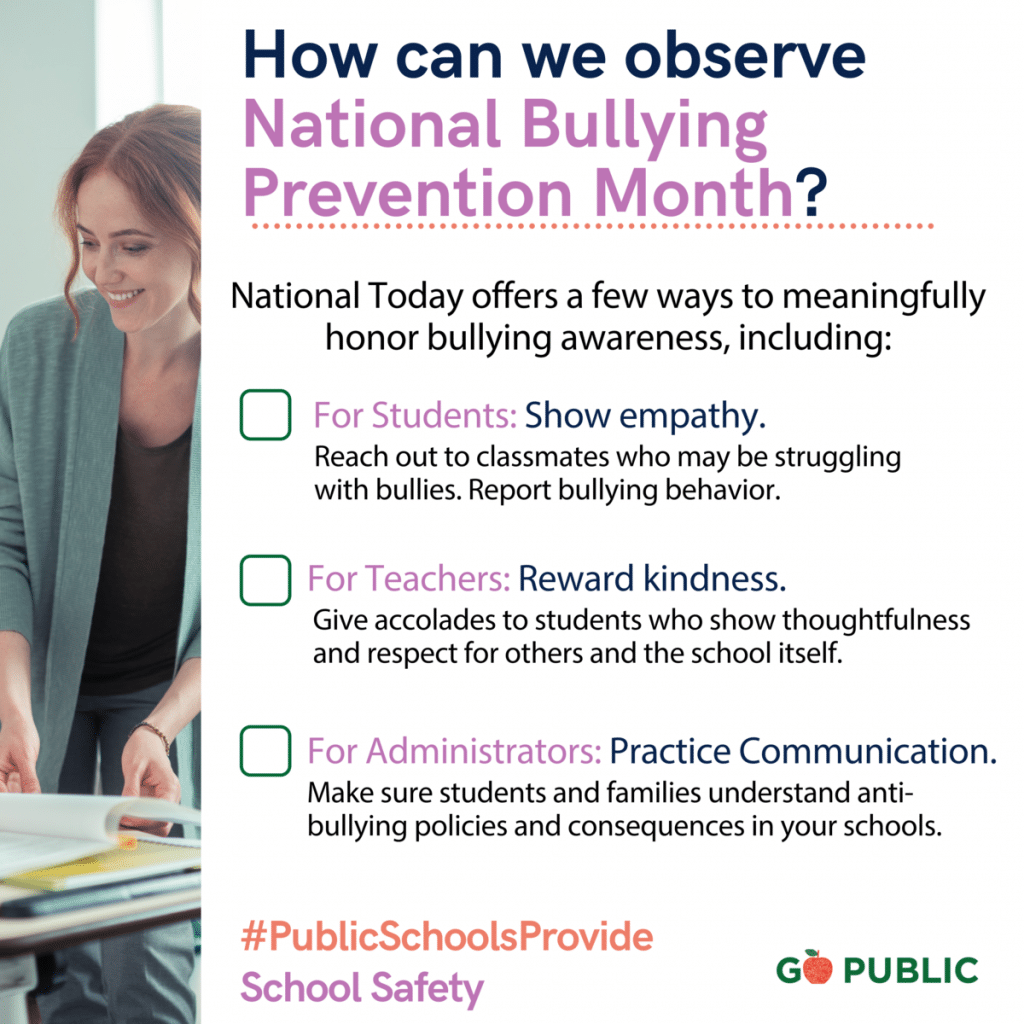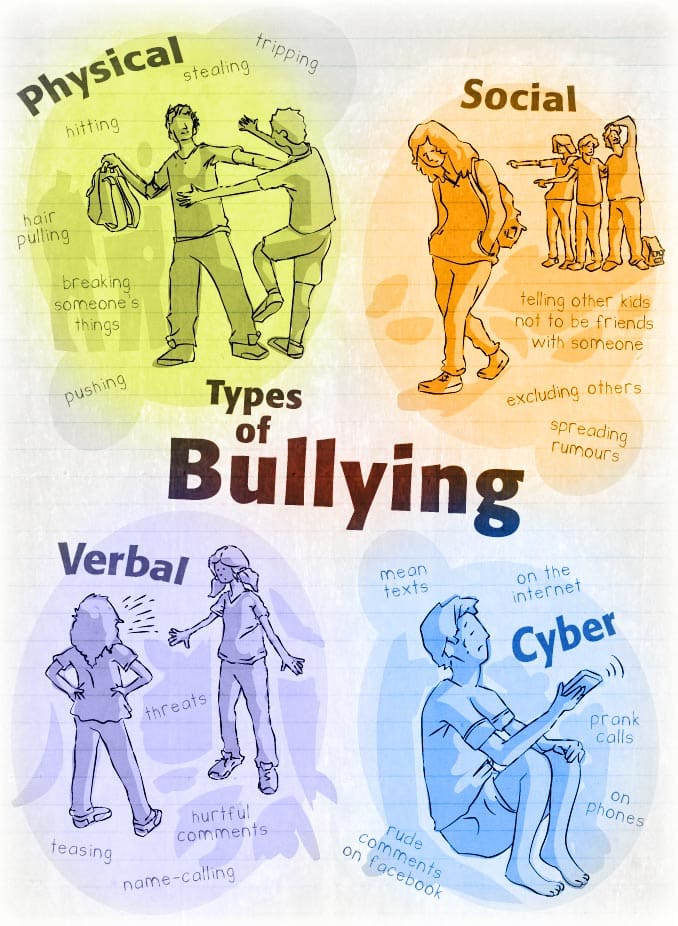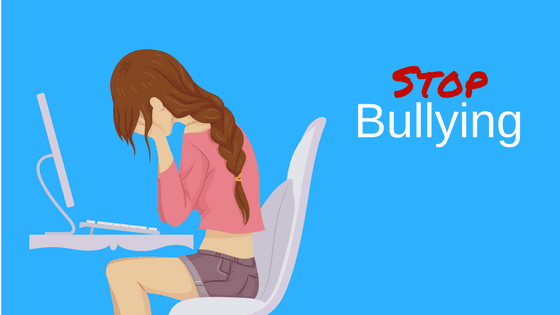Every October, public schools across the country observe National Bullying Prevention Month. The goal is to encourage communities to stop school bullying and cyberbullying. Bullying awareness helps to end hatred and racism against children of all ages. (STOMP Out Bullying)
Our public school districts have zero-tolerance bullying policies in place. Each district publicly states their bully-reporting protocol on district and campus websites. Counselors and teachers provide instruction on how to treat others, recognize mistreatment, and report bullying. Alamo Heights ISD clearly outlines what to do when a student witnesses or experiences harassment. Brazosport ISD has online forms to report bullying and a B*SAFE hotline for students to use if needed. Humble ISD schools are designated No Place For Hate campuses, where student and staff coalitions promote respect and social wellness. And in San Antonio ISD, elementary kids can sign a certificate to pledge to stop bullying.
What is bullying?
Psychology Today defines bullying as “a distinctive pattern of repeatedly and deliberately harming and humiliating others, specifically those who are smaller, weaker, younger, or in any way more vulnerable than the bully.” Bullying can be verbal, like name-calling and making fun of others, as well as physical, like threats of harm, intimidation, and exclusion from activities.
Young children usually bully others by physical aggression such as kicking or hitting. Older children more commonly use relational aggression such as spreading rumors or social exclusion.
The consequences of bullying
According to the Mayo Clinic, there are many consequences of bullying. A child who is bullied is at risk of:
- Physical injury
- Loneliness or isolation
- Low-self esteem
- Depression or anxiety, or thoughts of suicide
- Eating disorders or self-harming behaviors
- Heart palpitations
- Sleep disturbance
- Alcohol or drug use
- Frequent absences and poor performance in school
- Hostile behaviors
What is an “Upstander”?
A bystander is someone who witnesses bullying in person or online. The U.S. Department of Health and Human Services’ Stopbullying.gov website explains that “ friends, students, peers, teachers, school staff, parents, coaches, and other youth-serving adults can be bystanders. With cyberbullying, even strangers can be bystanders.”
Bystanders can help change the bullying situation by becoming an upstander. An upstander is someone who witnesses bullying and takes action to stop it from continuing. Upstanders can intervene, interrupt, or speak up to stop the situation from escalating.
A Meta-Analysis of School-Based Bullying Prevention Programs’ Effects on Bystander Intervention Behavior states that when bystanders intervene and defend the target of bullying, the bullying usually stops within 10 seconds.
How to be an Upstander
There are many ways bystanders can become upstanders (Stopbullying.gov) to make a difference:
-Question the behavior. Change the subject and shift the focus.
-Use humor to redirect the conversation.
-Intervene as a group to show there are more people who don’t agree with bullying.
-Support the target of bullying by walking with them to diffuse potential bullying interactions.
-Check in with the person who was bullied to let them know that you care.
What is cyberbullying?
The Stopbullying.gov website explains cyberbullying as “bullying that takes place over digital devices like cell phones, computers, and tablets”. It includes sending, posting, or sharing negative, harmful, false, or embarrassing content about another individual. Cyberbullying takes place via text, apps, social media, and gaming platforms.
Cyberbullying is most concerning because it is persistent. Children can be exposed to cyberbullying 24 hours a day. Also, information communicated online is permanent. Negative online information about an individual can impact their social life, employment opportunities, and college admissions. Lastly, cyberbullying is difficult to notice because it is silent, and teachers and parents may not be able to recognize it.
Is cyberbullying illegal?
Sometimes cyberbullying crosses the line into unlawful behavior. However, because cyberbullying is a relatively recent problem, the legislation regarding it is always evolving.
Bullying is not a criminal offense in most states. Schools are responsible for creating and enforcing policy regarding bullying. But in some cases, cyberbullying can be prosecuted under state cyber-harassment or cyberstalking laws. (Crimewire)
In Texas, penal code 33.07 makes online impersonation either a felony or a misdemeanor, depending on the circumstances. Texas House Bill 1942 requires school districts to adopt anti-bullying policies. In addition, Texas anti-bullying laws cover off-campus conduct if the cyberbullying interferes with a student’s educational opportunities or disrupts the operation of a classroom, school, or school-related activity. (Texas Anti-Bullying Laws)
What to do if you or your child is being cyberbullied
There are several steps to take immediately if you are the victim of bullying.
-Don’t respond to or forward cyberbullying messages.
-Keep evidence. Record dates, times, and descriptions of cyberbullying instances. Save screenshots, emails, and text messages.
-Report cyberbullying to the social media sites and cell phone or internet service providers so they can take action against users abusing their terms of service.
-Block the cyberbully.
Report Cyberbullying to Law Enforcement if you witness:
-Threats of violence
-Child pornography or sexually explicit messages or photos
-Private photos or videos of someone
-Stalking or hate crimes
How can we observe National Bullying Prevention Month?
National Today offers a few ways to meaningfully honor bullying awareness, including:
-For Students: Show empathy. Reach out to classmates who may be struggling with bullies. Report bullying behavior.
-For Teachers: Reward kindness. Give accolades to students who show thoughtfulness and respect for others and the school itself.
-For Administrators: Practice Communication. Make sure students and families understand anti-bullying policies and consequences in your schools.
Additional Resources:







